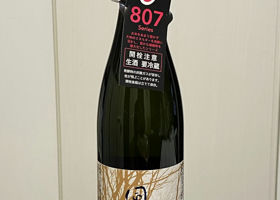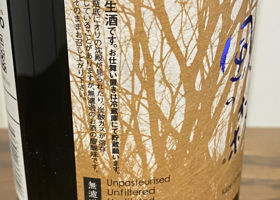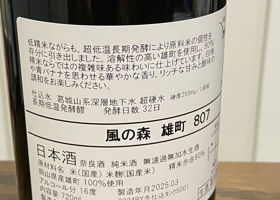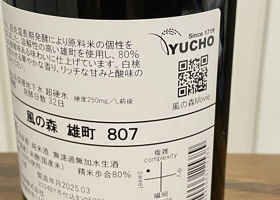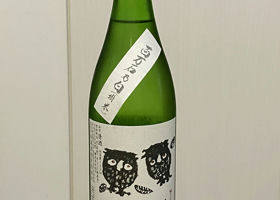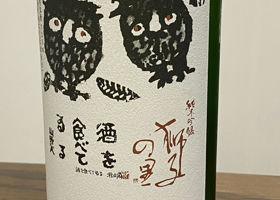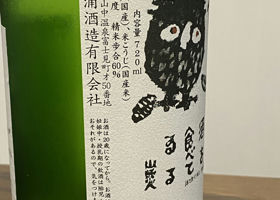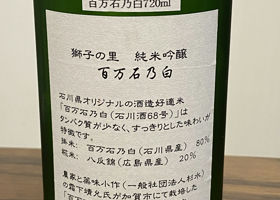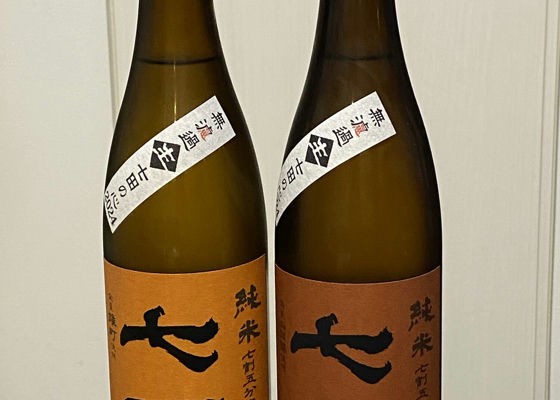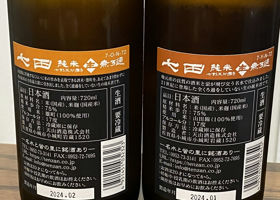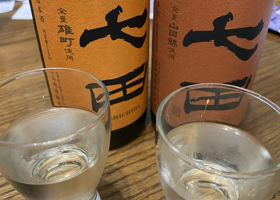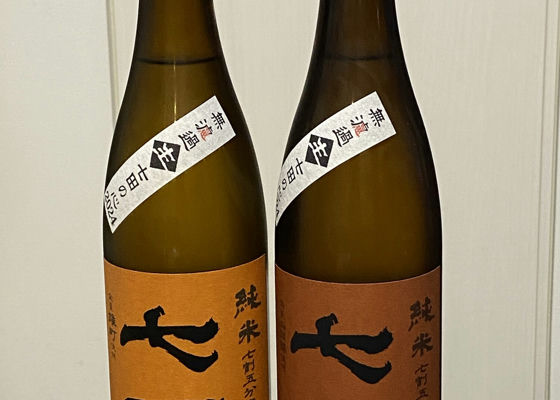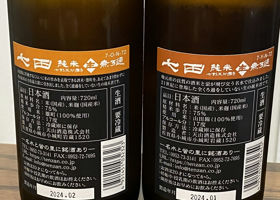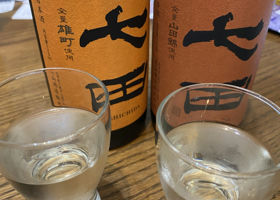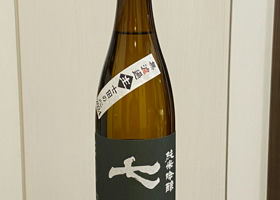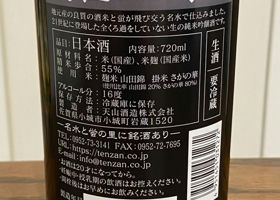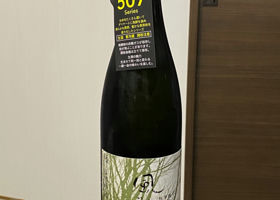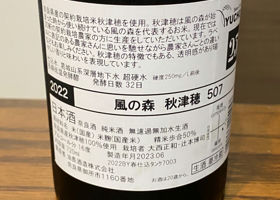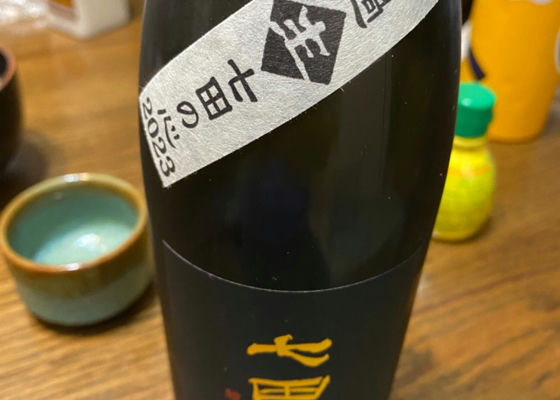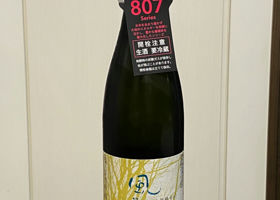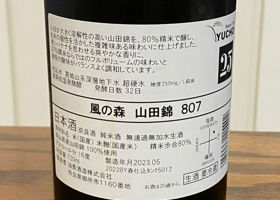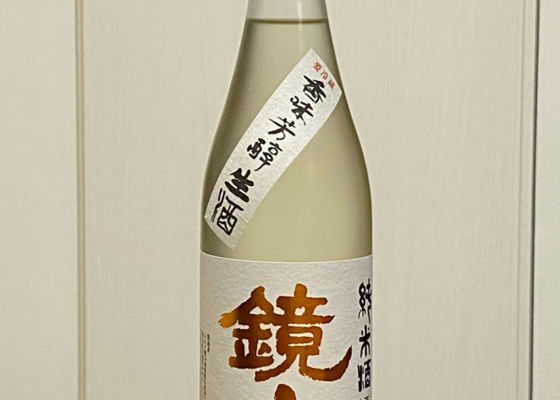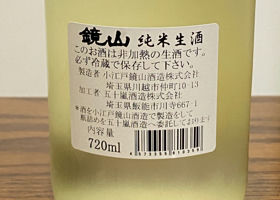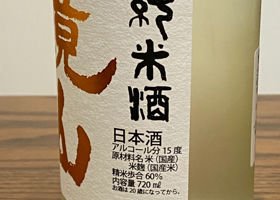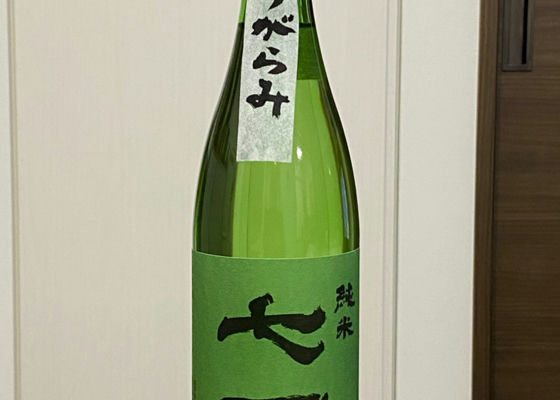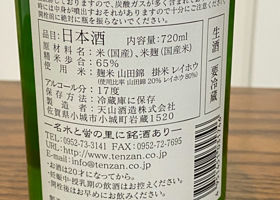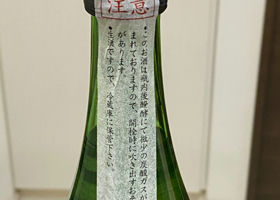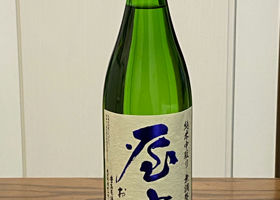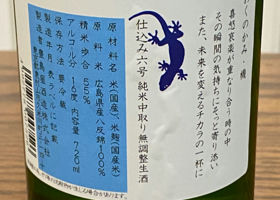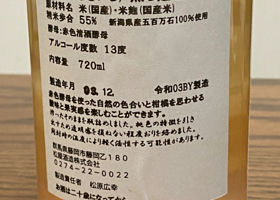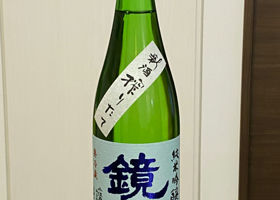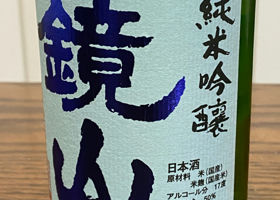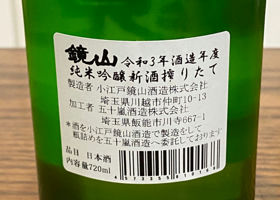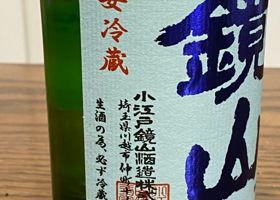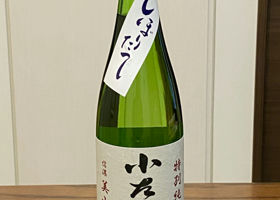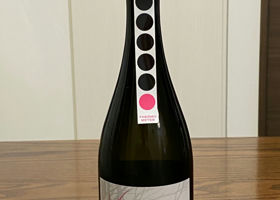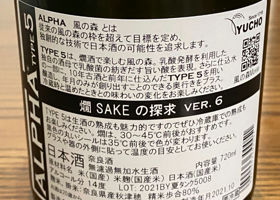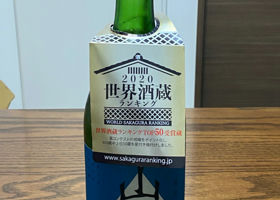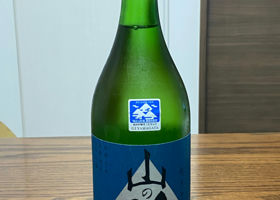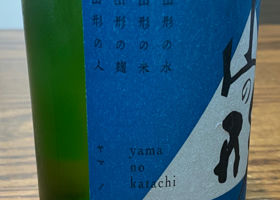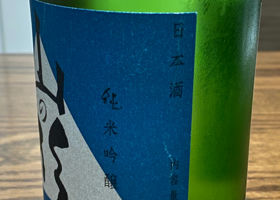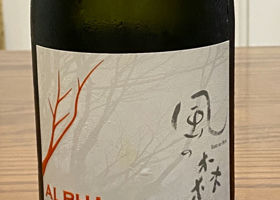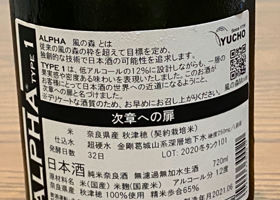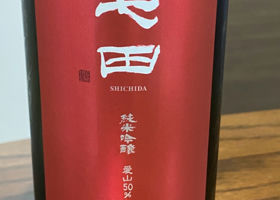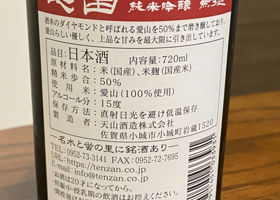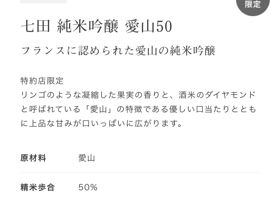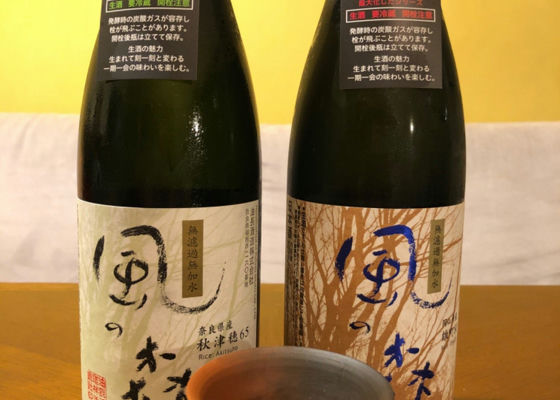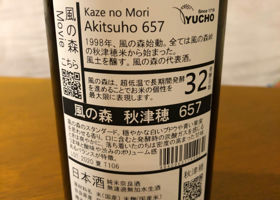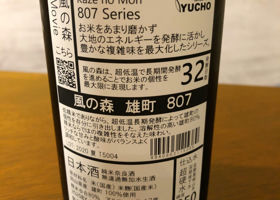Timeline
Y.TokushigeThe standing aroma is mildly likeable.
The sharp umami, sweetness and acidity are well balanced. Omachi is good!
It has the characteristic gasiness and dry minerality of Kaze no Mori, and has a nice sharpness.
Sake rice→100% Omachi produced in Okayama Prefecture
Rice polishing ratio→80
Alcohol content→16
Yeast → Association No. 7 yeast
Brewing water→Deep groundwater from the Katsuragi mountain range, ultra-hard water (hardness: around 250 mg/L) Y.TokushigeIt has a firm acidity and umami. The base of the sake is clean and refreshing, but the rich umami and acidity make it a perfect match for many different types of food. It is quite good!
Sake rice → Kake rice: 80% Hyakumangoku Norishiro produced in Ishikawa Prefecture
Koji rice: 20% Hachitan-Nishiki produced in Hiroshima Prefecture
Polishing ratio→80
Alcohol content→16 Y.TokushigeShichida's Shichiwari-Gobun Polishing Series is fresh with a strong umami flavor, but not too heavy! Since this is my favorite series, I compared the different rice varieties to see which one I liked the best!
The Omachi has more standing aroma, a little more acidity, and a clean finish. The Yamadanishiki has a little more sweetness, a richer umami, and a heavy aftertaste with a touch of astringency.
I guess it depends on the sake, but my personal impression is that I prefer the Omachi! Y.TokushigeShichida's Shichiwari-Gobun Polishing Series is fresh with a strong umami flavor, but not too heavy! Since this is my favorite series, I compared the different rice varieties to see which one I liked the best!
The Omachi has more standing aroma, a little more acidity, and a clean finish. The Yamadanishiki has a little more sweetness, a richer umami, and a heavy aftertaste with a touch of astringency.
I guess it depends on the sake, but my personal impression is that I prefer the Omachi! Y.TokushigeIt is fresh, mineral and full of umami. The sweetness and bitterness come gradually afterwards, and it finishes gently. It is so good without betraying expectations. It went well with white sashimi!
Sake rice → Koji rice: Yamadanishiki, Kake rice: Saganohana
(ratio of rice used: 20% Yamadanishiki, 80% Saganohana)
Polishing ratio→55%.
Alcohol content→16 Y.TokushigeFresh and gassy. Light and clear, yet complex. The dry astringency and bitterness are impressive.
(3 days after opening the bottle) The dry astringency has lightened a bit, making it easier to drink.
Sake rice: 100% Akitsuho (grown by Masakazu Onishi and Hiroshi Tsujimoto)
Rice polishing ratio→50
Alcohol content→16
Hardness: around 250 mg/L Y.TokushigeMy favorite Nanada Jungin Omachi! I will drink it again this year!
I'm going back to my roots, as I've been drinking a lot of things lately that have been hit or miss (in terms of taste).
Sake rice: 100% Omachi
Rice polishing ratio→50
Alcohol content→16 Y.TokushigeSharp and dry. It has a bitter acidity and a fresh gassy taste. It has a nice variety of complex flavors that can only be achieved with low milling.
Sake rice→100% Yamadanishiki produced in Okayama Prefecture
Polishing ratio→80
Alcohol content: 16%.
Brewing water→Deep groundwater from the Katsuragi mountain range, ultra-soft water
Yeast → Association No. 7 Y.TokushigeFresh and dry impression. The bitterness and acidity give it a sharpness that keeps you from getting tired of drinking it. It is not too rich, but not too fruity and easy to drink.
Rice polishing ratio→60
Alcohol content→15
Y.TokushigeGreat activity, shwash!
In a word, adult cream melon soda!
The schwarziness and lactic acidity are impressive, but the junmai sake has a strong rice flavor, and there is a considerable aftertaste of drinking sake due to the alcohol content.
Sake rice → Yamadanishiki, Reihou
Rice polishing ratio→65
Alcohol content→17 degrees Celsius Y.TokushigeFruity, juicy, rice flavor and acidity. Casually delicious! Y.TokushigeIt is sweet and sour, like juice. It's pink and cute to look at, but it also has a gassy, alcoholic aftertaste, and the sweetness isn't too strong, so it's a good sake. I'd buy it again! Y.TokushigeIt has a fruity sweetness with a mellow richness and a slightly heavy impression. It is good to match with thick dishes. Y.TokushigeFresh, fruity, pineapple-y, deliciously sweet! But it's light on the palate and quite sweet, but goes well with all kinds of snacks.
As time passed after opening, the sweetness settled down and the umami and sourness came forward a bit!
When I heated it up, the flavor increased and it became mellow! An excellent product that can be enjoyed in many ways. Y.TokushigeAs is typical of Kaze no Mori, it is easy to drink and has a pleasant gaseous sensation. It is yellowish in color and has the flavor of old sake, as it is stated that old sake is used in some of the brewing water. When it's cold, you can feel the alcohol in the aftertaste, but when it's warmed, you can easily feel the sourness of the lactic acid.
It's subtitled "The Quest for a Warmed Sake," but I personally prefer it unheated. Y.TokushigeFor a moment in the mouth it seems fruity? But the acidity gives it a refreshing, slightly dry taste. It's a good sake for sipping. Y.TokushigeIt has a fruity aroma and a balance of refreshing sweetness, umami and alcohol. It is light at 12% alcohol. This is certainly a good introduction to sake. Y.TokushigeElegant and smooth sweetness and aroma
Easy to drink! yutaI often see the Wind Forest as "delicious. First purchase.
Standard Akitsuho 657 and
We compared a cup of Omachi 807, which was recommended to be sweeter.
The Akitsuho is more fruity, sour and refreshing.
The Omachi is sweeter and firmer.
Both are refreshing with popping and slight carbonation.
It has a pleasant bitterness that makes it easy to drink without getting tired of it.
It's delicious.
I prefer it cold.
I want to try all kinds...I appreciate the affordable price.
<Akitsuho 657>
ears of grain
Rice polishing rate 65%.
16% alcohol by volume.
<Occupy 807
male homosexual
Rice polishing rate 80%.
17% alcohol by volume. RecommendedContentsSectionView.title
